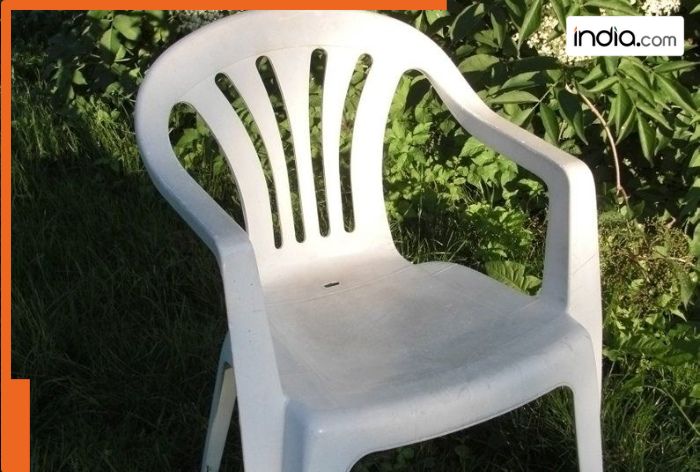Lifestyle
Uncovering the Purpose Behind the Hole in Plastic Chairs

Plastic chairs often feature a small hole at the back, a design element that serves multiple practical purposes. While many may overlook this detail, it plays a crucial role in the functionality, manufacturing, and aesthetic appeal of the chairs.
Enhancing Functionality and Ease of Use
One of the primary reasons for the hole is related to stacking. When plastic chairs are stacked, they can create an air pocket that leads to a phenomenon known as “suction.” This suction makes it difficult to separate the chairs. The hole allows air to escape, preventing the chairs from sticking together and ensuring that they can be easily pulled apart when needed.
This design feature not only improves usability but also enhances the overall user experience. With the ability to stack chairs without hassle, venues such as schools, event spaces, and homes benefit from the efficient use of space.
Streamlining Manufacturing and Reducing Costs
The manufacturing process of plastic chairs also benefits from this small hole. During production, hot plastic is poured into molds to form the chairs. The hole aids in the extraction of the chair from the mold, allowing it to be released more easily. Additionally, if any plastic remains stuck to the mold, the hole can help prevent breakage during removal.
Beyond facilitating manufacturing, the hole contributes to cost efficiency. It allows for a lighter design, which translates to using less plastic in each chair. While the savings for a single chair may be minimal, they become substantial when considering mass production, where millions of chairs are manufactured.
The combination of these factors makes the hole not just a functional design element but also a critical aspect of cost-effective production.
Improving Comfort and Aesthetics
The benefits of the hole extend beyond manufacturing and stacking. It also enhances comfort for users. The hole allows for improved ventilation, keeping individuals cooler during extended periods of sitting. This feature is particularly valuable in warmer climates or settings where chairs are used for long durations.
Additionally, in the event of spills, the hole helps prevent water from pooling on the surface of the chair, allowing it to drain away easily. This practical aspect contributes to the chair’s longevity and usability.
From an aesthetic perspective, the hole provides a lighter appearance, preventing the chair from looking bulky. It creates a sense of openness in the design, making it a versatile choice suitable for various environments.
In summary, the small hole in a plastic chair is far from a mere design quirk. It serves multiple critical functions that enhance usability, streamline production, and improve comfort. This example illustrates how even the simplest design features can have profound implications for practicality and efficiency.
-

 World5 months ago
World5 months agoSBI Announces QIP Floor Price at ₹811.05 Per Share
-

 Lifestyle5 months ago
Lifestyle5 months agoCept Unveils ₹3.1 Crore Urban Mobility Plan for Sustainable Growth
-

 Science4 months ago
Science4 months agoNew Blood Group Discovered in South Indian Woman at Rotary Centre
-

 World5 months ago
World5 months agoTorrential Rains Cause Flash Flooding in New York and New Jersey
-

 Top Stories5 months ago
Top Stories5 months agoKonkani Cultural Organisation to Host Pearl Jubilee in Abu Dhabi
-

 Sports4 months ago
Sports4 months agoBroad Advocates for Bowling Change Ahead of Final Test Against India
-

 Science5 months ago
Science5 months agoNothing Headphone 1 Review: A Bold Contender in Audio Design
-

 Top Stories5 months ago
Top Stories5 months agoAir India Crash Investigation Highlights Boeing Fuel Switch Concerns
-

 Business5 months ago
Business5 months agoIndian Stock Market Rebounds: Sensex and Nifty Rise After Four-Day Decline
-

 Sports4 months ago
Sports4 months agoCristian Totti Retires at 19: Pressure of Fame Takes Toll
-

 Politics5 months ago
Politics5 months agoAbandoned Doberman Finds New Home After Journey to Prague
-

 Top Stories5 months ago
Top Stories5 months agoPatna Bank Manager Abhishek Varun Found Dead in Well









